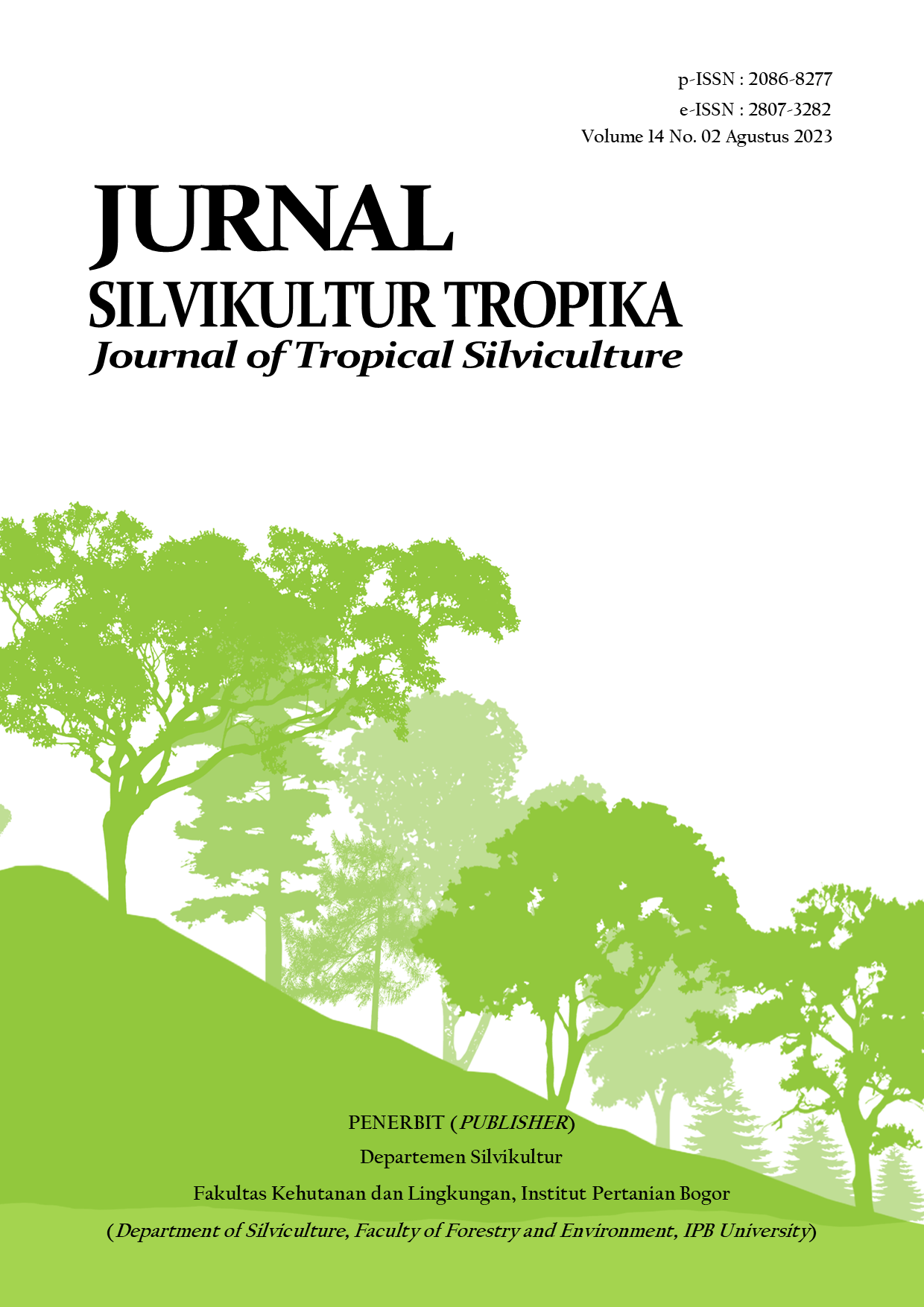Aplikasi Seedballs untuk Pertumbuhan Benih Nangka (Artocarpus heterophyllus), Bisbul (Diospyros blancoi), dan Merbau (Intsia bijuga)
Abstract
The area of critical land in Indonesia is increasing. Critical land rehabilitation has been carried out by one of the methods used is direct planting. However, direct planting has drawbacks, namely the seeds are very prone to be eaten by insects and birds, and the seeds are easily damaged due to environmental factors. One method that can be tested is the application of seedballs using adaptive plants, such as jackfruit (Artocarpus heterophyllus), bisbul (Diospyros blancoi), and merbau (Intsia bijuga). The purpose of this study was to formulate seedballs and their application for the growth of jackfruit (A. heterophyllus), bisbul (D. blancoi), and merbau (I. bijuga) plants. This study used a quantitative descriptive analysis method with 3 types of seedballs’ formulas. The results showed the fastest germination rate was produced by formula 1 (clay) on bisbul, formula 2 (clay: topsoil) on jackfruit, and formula 3 (clay: topsoil: husk charcoal: palm waste) on merbau. The highest seed germination capacities were formulas 1 and 3 for jackfruit species, formulas 2 and 3 for bisbul species, as well as formulas 1 and 2 for merbau species. Formula 3 is generally able to increase the height, diameter, and number of leaves of plants.
Keywords: acceleration of rehabilitation, adaptive plant, oil palm waste
Downloads
Copyright (c) 2023 Adisti Permatasari Putri Hartoyo, Khorina Rahmadhani, Talitha Nur Syahira, Rizka Aulian Kusuma, Novita Julia Astuti, Dicky Maulana, Dimas Nur Muhammad

This work is licensed under a Creative Commons Attribution 4.0 International License.










